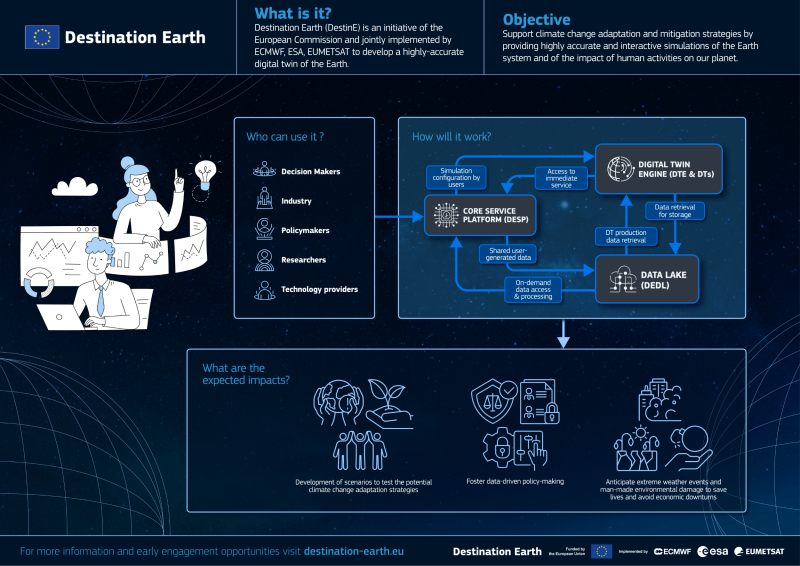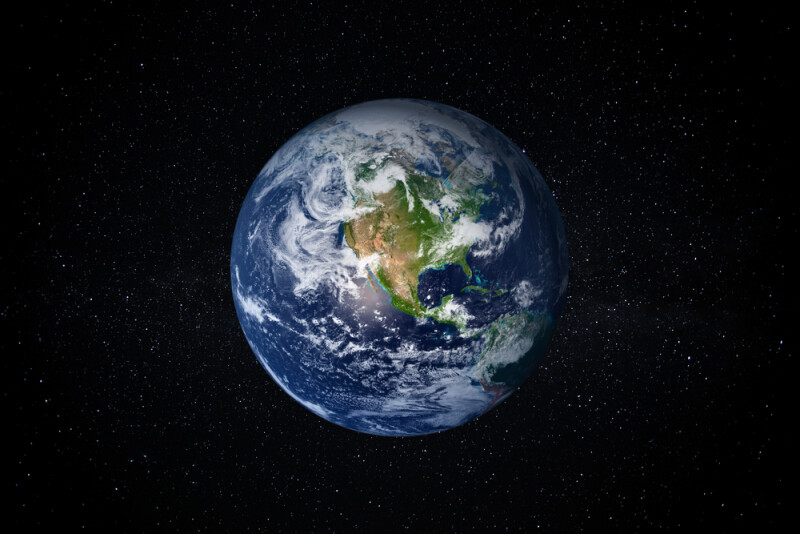Climate change is an existential threat to every corner of the Earth. While different areas will experience the effects of climate change in different ways – whether it be losing homes and other important areas to sea level rise, or making already hot areas borderline unlivable – every government is working on ways to mitigate these effects and ultimately slow down the changing climate. The reality, of course, is that any significant impact is going to have to come through cooperation between multiple entities and governments, something that the European Commission has recognized.
As a part of the broader European Union executive branch, the European Commission has an obvious advantage in being able to bring together multiple entities, but they have been hard at work for years now working on a digital twin of the entire planet in order to better monitor and fight the effects of climate change. The project, called Destination Earth, is a complex one with many deadlines, but they hit a major milestone along that path earlier this week. On June 10, as part of a large event, they announced the launch of their Destination Earth System, also known as the DestinE system.
This launch, while just an initial phase of this project which will be iterated over the coming years, is a substantial achievement that the European Commission says was the result of work from over 100 partners from around Europe that came together less than two-and-a-half years after this project was announced. The launch was announced in Kajaani, Finland at the EruoHPC JU LUMI supercomputer center and included comments from a variety of professionals involved in the effort.
That included Florence Rabier, the Director-General of the European Centre for Medium Range Weather Forecasts, who said at the event, “In our time of climate crisis, Destination Earth is a groundbreaking initiative to benefit society. For fifty years ECMWF in collaboration with its Member States has been at the cutting edge of using high-performance computers together with large Earth Observation data, modeling and now artificial intelligence to create value for society through weather forecasting and climate. We are proud to utilize this expertise in creating the first digital twins of DestinE.”

This launch, while significant, is just the third item on the timeline the group has given out, with the ultimate goal of releasing a “full digital replica” of the Earth by the year 2030. Still, even with this initial launch there are still offerings available. In total, Destination Earth lists 19 services available now – some are still in beta while others are fully available – with three more listed that are “coming soon.” Among those available today include services for visualization, data storage and handling, tourism-specific digital twin offerings, and AI capabilities, among others. Today, anyone can view the platform here and see visualizations for simulation of temperature, ice thickness, and wind speed.
It’s clear that there is a significant amount of work left to be done in truly reaching the goals for which they set out when the European Commission started this project, but it is now possible to more tangibly conceptualize what that looks like. Taking in data from a wide variety of sources and garnering expertise from multiple areas and governments ensures that more gaps will be filled and more lived experiences will be taken into account. The result should be – and in some ways already is – a robust digital twin with which extremely important work can be done.
As an example, Geo Week News spoke earlier this year with Dr. Luca Brocca, who was part of a team building a digital twin specifically for the water cycle and how that can be affected by climate change. These kinds of simulations will be crucial, and all of this data coming in to form the DestinE platform is a massive part of ensuring maximum value from these simulations. There’s not going to be a silver bullet to fighting climate change, and there will surely be effects that we cannot anticipate, but this project – and hopefully others that pop up in the coming years– will allow us to utilize massive amounts of data to prepare for a variety of scenarios and mitigate damage to whatever extent is realistically possible.
At the launch event, European Commission Executive Vice President Margrethe Vestager echoed these thoughts, saying, “The launch of the initial Destination Earth is a true game changer in our fight against climate change. DestinE will provide us with a highly accurate twin of the Earth. It means that we can observe environmental challenges which can help us predict future scenarios – like we have never done before. This first phase shows how much we can achieve when Europe puts together its scientific excellence and its massive supercomputing power. Today, the future is literally at our fingertips.”






